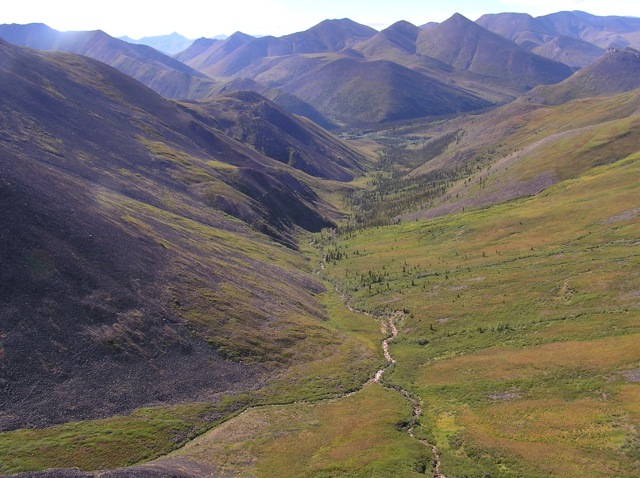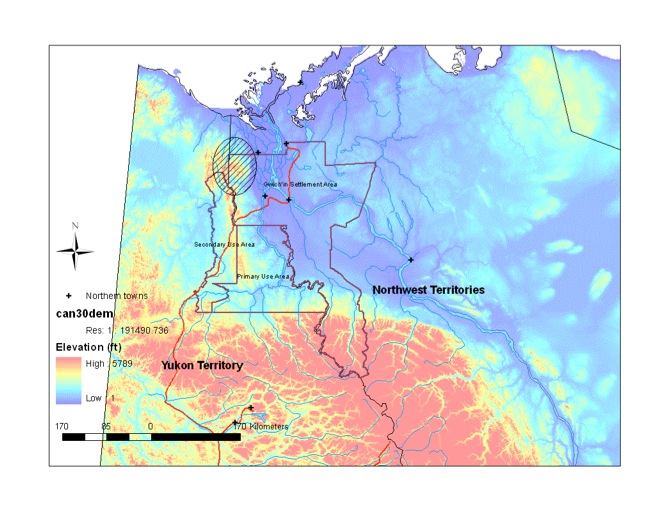
The Richardson Mountains are home to a rich variety of
wildlife species and possess a high cultural, conservation,
and hunting value for northern people. The study area
encompasses about 3,000 km2 and lies in the northern
Richardson Mountains (67º 30' - 68º 30' N, 135º 30' - 137º
W), at the northwest corner of the Gwich’in Settlement
Area, adjacent to the Yukon border (fig. 1). This
mountainous region is characterized by 1,250 m peaks and
plateaus, interspersed with 300 m valleys. Large mammals in
the study area include Dall sheep, Porcupine caribou,
moose, muskoxen (Ovibos moschatus), grizzly bears,
wolves, lynxes (Lynx canadensis), red foxes
(Vulpes vulpes), and wolverines (Gulo
gulo). Golden eagles (Aquila chrysaetos) are
seasonally present in the area and may predate on sheep.
Subsistence harvest of Dall sheep and wolves occurs on both
sides of the Yukon and Northwest Territories border, but no
resident or non-resident hunting of sheep is permitted at
this time. Grizzly bear harvest in the Richardson Mountains
is restricted to a triennial quota of 12 bears in the
Gwich’in Settlement Area (Grizzly Bear Management Agreement
in the Gwich’in Settlement Area 2000) and 12 bears in the
Inuvialuit Settlement Region (Inuvialuit Game Council,
Hunters and Trappers Committee, personal comm.). Although
the area is presently relatively pristine, forthcoming oil
and gas development in the adjacent Mackenzie Valley may
leave a heavy footprint (Holroyd and Retzer 2005).
Additionally, the Arctic is among the most impacted biomes
by climate change (ACIA 2005, Walther et al. 2002), and a
rapid warming will likely influence abundance and
composition of vegetation, wildlife, and diseases. The
Richardson Mountains are therefore likely to undergo
significant changes in the future.
